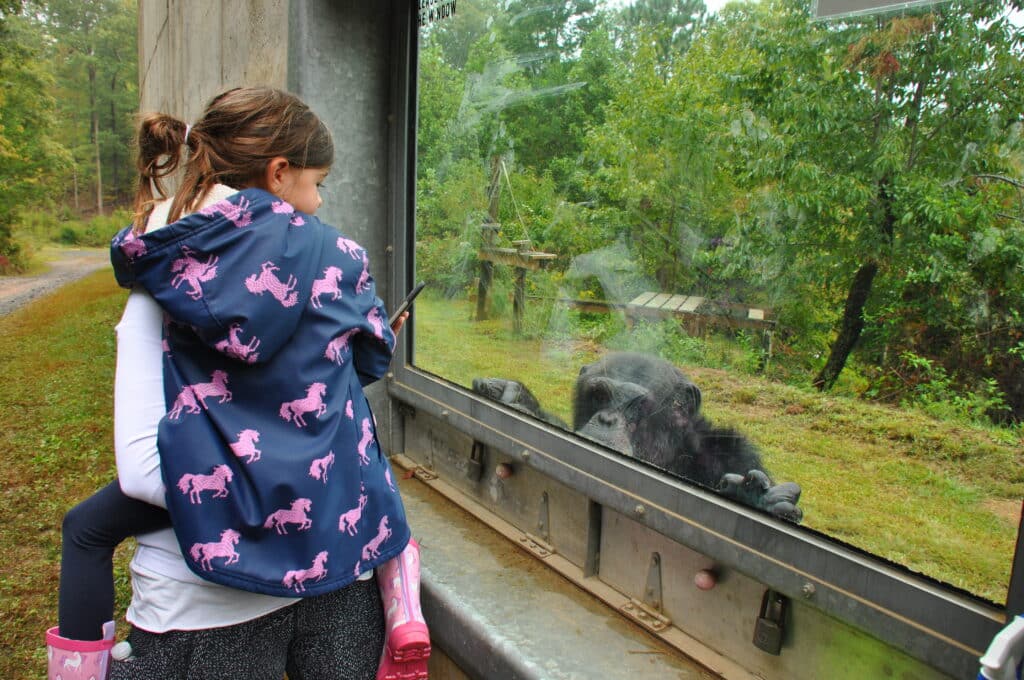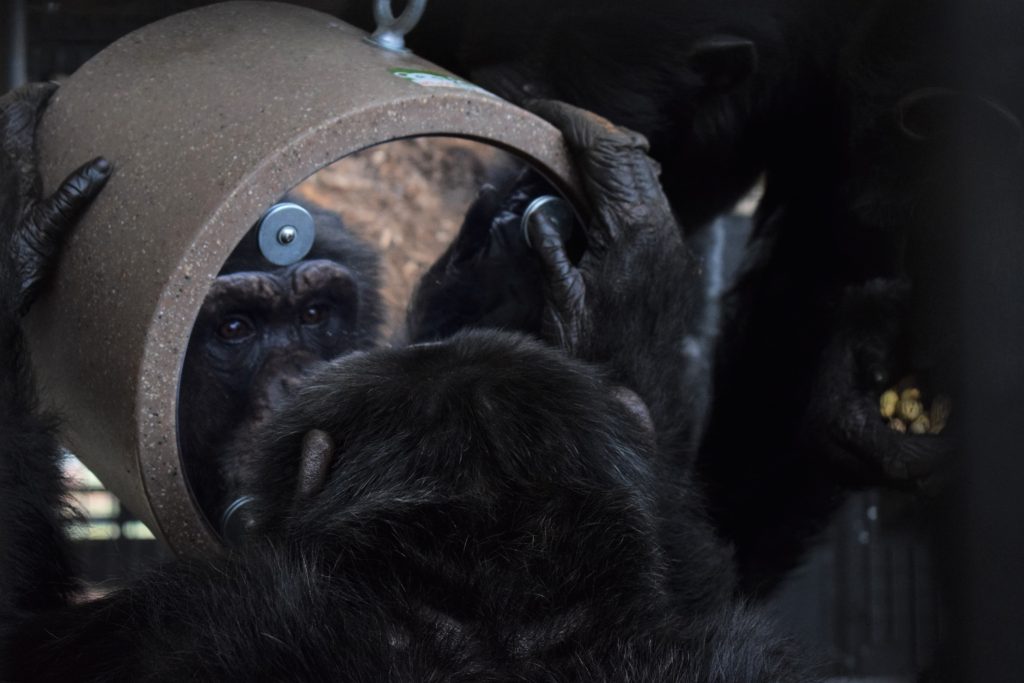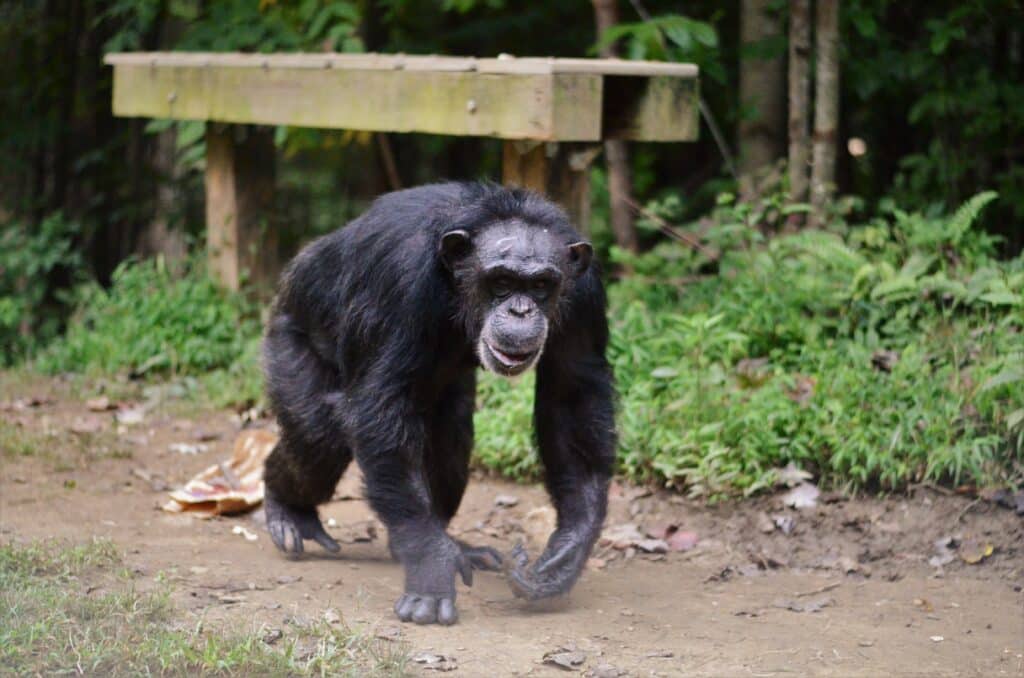
Why human oriented isn’t always good for chimps

By Joseph Elliot
The bond formed between chimp caregivers and the chimps themselves are vitally important in their everyday care. But there is also a fine line caregivers must be careful not to cross. Too much human attention can be detrimental to their social interactions with their troop members.
There are two types of chimps in this world
We have “chimp chimps” and “human oriented chimps”. Chimp chimps prefer interacting with their fellow troop members over interacting with human caregivers. Human oriented chimps like to focus their time and energy on human caregivers. It can be fun at first because the chimps will come over, interact with us and be playful. Sometimes, they’ll follow us around the villa to see what we’re up to.
This type of interaction creates an unhealthy amount of attention from the chimps.
My friend Marlon
Marlon can be very human oriented to the point where it affects his interactions with his conspecifics, which is another word for members of his species. Marlon is always very excited to see me.

As a new caregiver, I loved it! I found a chimp that was really excited to see me, and I was excited to see him! It felt like I was getting a chance to form a bond with an extraordinary animal.
Unfortunately, his enthusiasm became a fixation. Marlon’s fixations with me included following me around the enclosure just to see what I was doing. If I didn’t give him the attention he demanded, he would display, stomping around and making loud noises.
Often his displays would amp up his troop members and create fights. Marlon would come seek me out to back him up in his displays. As a human and as a caregiver, I can’t back him up. I would have to turn my back to him which frustrates him more. I interact with Marlon for only a few hours a day. He lives with his conspecifics twenty-four seven. Marlon must learn to rely on his troop members for this type of reassurance.
Some human interaction is fine!
I still need to have a relationship with Marlon, but stricter boundaries needed to be established. Going forward care staff had to limit our interactions with Marlon. We figured out the best way to manage Marlon’s fixation is to treat him as any other resident but to limit our face-to-face interactions. Caregivers are not ignoring Marlon or punishing him, but we walk a fine line of interacting with Marlon for his best interest. By restricting our interactions, this forces Marlon to seek out his troop members and become more of a chimps chimp.
Introducing Precious
Precious is one of Marlons conspecifics, her presence helps Marlon properly adjust. Precious will seek him out when he tries to get our attention by displaying, she will run up to him and start to groom him or engage him with a game of tag.

Marlon and I have had a better bond over the last few years. I walk into the villa every morning, greeting everyone with “hello” and “good morning”. I make a special stop to say hi to Marlon. Since putting these tactics into practice, Marlon has decreased his displays. I can give Marlon the attention he looks for when we do medical training in the afternoon or during a game. Otherwise, I acknowledge his presence and move on to other tasks.
Over time, he has been strengthening his bonds within his troop, playing with the younger chimps, Haylee and Tristen. It has been great to watch Marlon settle in at Project Chimps.
Interested in working directly with chimps? Check out our job openings!

